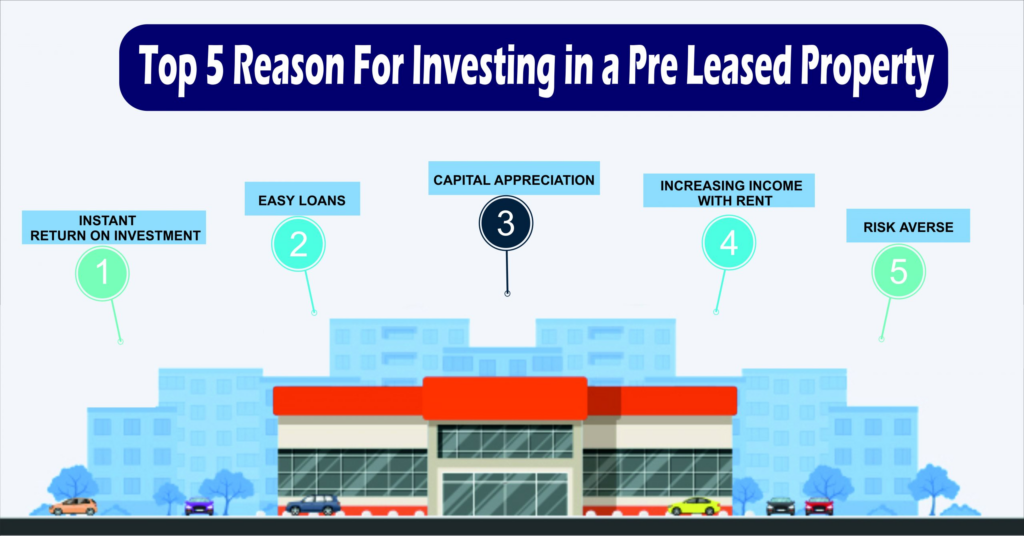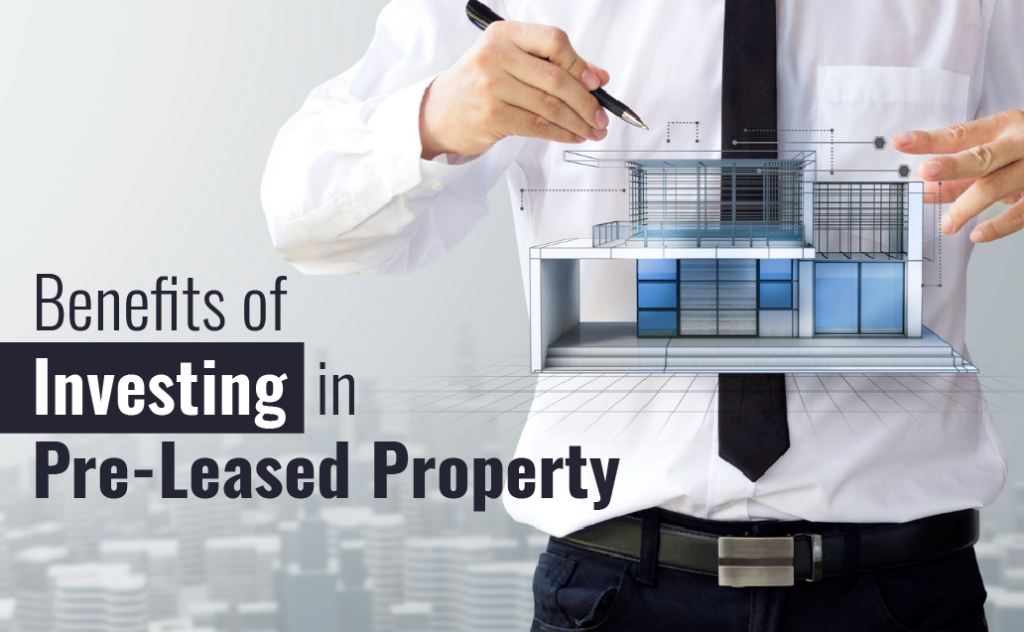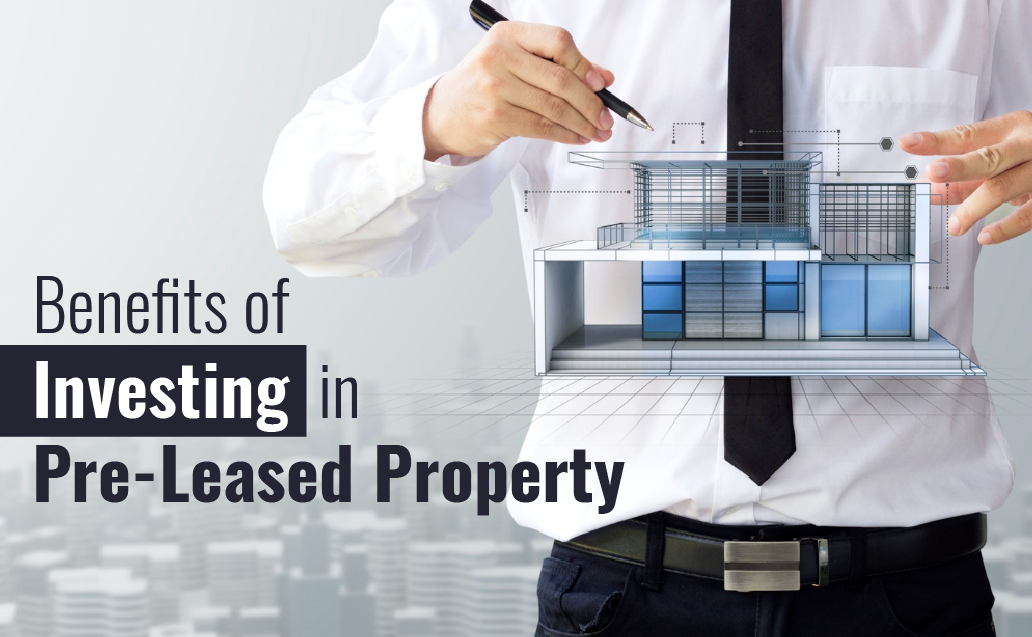
Investing in pre-leased commercial property presents a promising opportunity for real estate investors seeking stable income and long-term growth. Pre-leased properties are those that already have tenants in place with existing lease agreements, providing an immediate cash flow upon acquisition. This article will provide valuable insights and practical tips for navigating the world of pre-leased commercial property investments.
In the following sections, we will explore various aspects of investing in pre-leased commercial property, including understanding the concept and characteristics of such properties, conducting market research, assessing tenants and lease agreements, evaluating property quality and condition, financial analysis, legal considerations, financing options, risk management, exit strategies, and long-term planning.
By delving into these topics, investors can gain a comprehensive understanding of the factors to consider when entering the pre-leased commercial property market. With a clear understanding of the nuances involved, investors can make informed decisions, mitigate risks, and optimize their returns.
It is important to note that while this article provides valuable insights, it is always advisable to consult with professionals such as real estate agents, lawyers, and financial advisors who can provide personalized advice based on your specific circumstances and Investment goals. So let’s begin our journey into the world of investing in pre-leased commercial property and uncover the tips and strategies that can lead to success in this lucrative sector.
Understanding Pre-Leased Commercial Property
To make informed investment decisions in pre-leased commercial property, it is important to have a clear understanding of its definition, characteristics, advantages, and potential risks. Here are key aspects to consider when understanding pre-leased commercial property:
Definition and Characteristics
Pre-leased commercial properties refer to real estate assets that already have tenants occupying the space under lease agreements. These properties can include office buildings, retail spaces, industrial complexes, and more. The lease agreements outline the terms and conditions, rental income, lease duration, and other pertinent details. Investors purchase these properties to earn rental income and Potentially Benefit from property appreciation over time.
Advantages and Potential Risks
Investing in pre-leased commercial property offers several advantages. Firstly, you avoid the hassle of finding tenants and negotiating lease agreements. The property already has a reliable tenant in place, ensuring immediate rental income.
Secondly, the lease agreements often span several years, providing stability and a predictable cash flow. However, there are risks involved as well. The tenant may default on rental payments or terminate the lease prematurely, resulting in a potential vacancy. Additionally, market conditions can impact the rental demand and property value, affecting your investment returns.
Factors to Consider Before Investing
Before investing in pre-leased commercial property, several factors require careful consideration. Location plays a vital role in the success of your investment. Research potential areas with strong economic growth, high rental demand, and favorable market conditions. Analyze the tenant’s business and reputation, as their success directly impacts your rental income.
Evaluate the lease agreement to understand the terms, rental escalations, renewal options, and exit clauses. Assessing the property’s quality, condition, and future maintenance requirements is essential to avoid unexpected expenses. Conducting thorough due diligence, market research, and seeking professional advice are crucial steps to mitigate risks and make informed investment decisions.
Conducting Market Research
By Conducting comprehensive market research is crucial when investing in pre-leased commercial property. It provides valuable insights into market conditions, rental demand, and growth potential. Here are key considerations for conducting market research:
Identifying Potential Locations and Markets
When investing in pre-leased commercial property, identifying promising locations and markets is essential. Look for areas experiencing economic growth, population expansion, and increased business activity. Consider factors such as infrastructure development, proximity to transportation hubs, amenities, and the presence of reputable companies. By selecting a location with strong fundamentals, you enhance the potential for rental income growth and property value appreciation.
Analyzing Rental Demand and Occupancy Rates
Analyzing rental demand and occupancy rates is crucial in assessing the viability of investing in pre-leased commercial property. Research the local market to understand the demand for commercial space and vacancy rates. Lower vacancy rates indicate a healthy rental market with the potential for consistent occupancy. A high demand for commercial properties in the area increases the likelihood of attracting tenants in the future and potentially increasing rental income.
Evaluating the Stability and Growth Potential of the Market
Stability and growth potential are essential considerations when investing in pre-leased commercial property. Evaluate the economic stability of the region, including factors such as GDP growth, employment rates, and industry diversification. A stable and growing market reduces the risk of tenant turnover and provides a favorable environment for businesses to thrive.
Consider future development plans, infrastructure projects, and government initiatives that may contribute to the growth of the market. By assessing the stability and growth potential of the market, you can make informed decisions regarding your investment in pre-leased commercial property.
Assessing the Tenant and Lease Agreement
Assessing the tenant and reviewing the lease agreement are critical steps in investing in pre-leased commercial property. Understanding the tenant’s background and evaluating the lease agreement helps you gauge the stability of the investment and minimize potential risks. Here are key considerations when assessing the tenant and lease agreement:
Researching the Tenant’s Background and Reputation
Before investing in a pre-leased commercial property, it is crucial to research the background and reputation of the tenant occupying the space. Learn about the tenant’s business model, financial stability, and track record. Assess their industry position, market share, and competitive advantage. A financially sound and reputable tenant reduces the risk of default on rental payments and lease termination, providing a more secure investment.
Reviewing the Terms and Conditions of the Lease Agreement
Carefully reviewing the terms and conditions of the lease agreement is vital to understanding the investment potential of a pre-leased commercial property. Analyze the rental income, lease duration, rental escalation clauses, renewal options, and any additional charges or responsibilities. Pay attention to clauses related to maintenance obligations, property improvements, and termination conditions. A well-structured lease agreement can provide a stable and predictable income stream, while unfavorable terms may impact your investment returns.
Analyzing the Rental Income and Lease Duration
Assessing the rental income and lease duration is essential when evaluating a pre-leased commercial property. Calculate the rental yield by dividing the annual rental income by the property’s purchase price. Compare this yield to prevailing market rates to determine if the investment is financially attractive. Additionally, consider the lease duration and its alignment with your investment goals. A longer lease duration provides stability and reduces the risk of vacancies, while a shorter lease may offer flexibility but comes with higher tenant turnover risks.
Evaluating Property Quality and Condition
Evaluating the quality and condition of a pre-leased commercial property is crucial to assess its value, potential risks, and future maintenance requirements. Thoroughly examining the property allows you to make informed investment decisions. Here are some key aspects to consider when evaluating property quality and condition:
Conducting a Thorough Inspection of the Property
Before investing in a pre-leased commercial property, it is crucial to conduct a thorough inspection of the premises. Engage professionals, such as building inspectors and engineers, to assess the property’s physical condition. Inspect the structural integrity, electrical systems, plumbing, HVAC, and overall maintenance of the building. Identify any potential issues or required repairs and factor in the associated costs. A comprehensive inspection ensures that you are aware of the property’s condition and helps you avoid unexpected expenses in the future.
Assessing the Building’s Structural Integrity
The structural integrity of the building is a critical aspect to evaluate when considering an investment in pre-leased commercial property. Engage experts to assess the foundation, load-bearing elements, roof, walls, and overall stability of the structure. Ensure that the building complies with safety codes and regulations. Investing in a structurally sound property reduces the risk of significant repairs or safety hazards that may impact your investment returns.
Considering the Maintenance and Renovation Requirements
Consider the maintenance and renovation requirements of the property before making an investment decision. Evaluate the age of the building, the condition of fixtures and fittings, and any necessary upgrades or renovations. Factor in the associated costs and assess whether they align with your budget and investment goals. Understanding the maintenance and renovation needs allows you to make an informed decision and develop a comprehensive financial plan for the property.
Financial Analysis and Due Diligence
Conducting thorough financial analysis and due diligence is critical when investing in pre-leased commercial property. It allows you to assess the financial viability of the investment, mitigate risks, and make informed decisions. Here are key considerations for financial analysis and due diligence:
Calculating Potential Returns and Cash Flow
Performing a financial analysis is crucial to determine the potential returns and cash flow of a pre-leased commercial property. Calculate the net operating income (NOI) by subtracting operating expenses from rental income. Consider factors such as property management fees, maintenance costs, property taxes, insurance, and vacancy rates. Assess the potential return on investment (ROI) by dividing the NOI by the property’s purchase price. A positive cash flow and attractive ROI indicate a financially viable investment opportunity.
Assessing the Property’s Value and Potential Appreciation
Assessing the property’s value and potential appreciation is important when investing in pre-leased commercial property. Research recent comparable property sales in the area to determine the property’s market value. Consider factors such as location, market trends, and demand-supply dynamics. Additionally, analyze the potential for property appreciation over time-based on market projections, economic growth, and development plans. Investing in a property with the potential for value appreciation can enhance your long-term returns.
Conducting a Comprehensive Due Diligence Process
Conducting thorough due diligence is crucial to minimize risks and ensure a successful investment in pre-leased commercial property. Engage professionals such as real estate lawyers, accountants, and property inspectors to assist you in the process. Review all relevant documentation, including lease agreements, property titles, permits, and compliance certificates. Verify the property’s legal status, any encumbrances, and potential liabilities. A comprehensive due diligence process provides a deeper understanding of the investment and mitigates potential risks.
Legal and Regulatory Considerations
When investing in pre-leased commercial property, it is essential to navigate the legal and regulatory landscape to ensure compliance and protect your investment. Here are some important considerations for legal and regulatory aspects:
Understanding Local Laws and Regulations
Understanding local laws and regulations is essential when investing in pre-leased commercial property. Familiarize yourself with zoning regulations, building codes, and permits required for operating commercial properties. Research any specific laws related to leasing and tenant rights in the jurisdiction. Compliance with legal requirements ensures a smooth investment process and protects your interests as an investor.
Reviewing Zoning and Land-Use Restrictions
Reviewing zoning and land-use restrictions is crucial to ensure the property’s suitability for commercial purposes. Verify that the property is zoned for the intended use and that there are no restrictions or limitations that may affect your investment plans. Zoning regulations can impact future development opportunities or renovations, so it’s important to understand these restrictions beforehand.
Consulting with Legal and Tax Professionals
Consulting with legal and tax professionals is highly recommended when investing in pre-leased commercial property. Real estate lawyers can guide lease agreements, property titles, and any legal issues related to the investment. Tax professionals can advise on tax implications, deductions, and strategies for optimizing your investment returns. Seeking professional advice ensures compliance with legal and tax requirements and helps maximize the profitability of your investment.
Financing Options and Investment Strategies
When investing in pre-leased commercial property, exploring financing options and developing a sound investment strategy are crucial for achieving your financial goals. Here are some important considerations for financing and investment strategies:
Exploring Financing Options and Loan Terms
When investing in pre-leased commercial property, exploring financing options and loan terms is crucial. Research various lenders, including banks and private financing institutions, to understand the available loan products and interest rates. Evaluate loan terms, repayment schedules, and associated costs. Compare financing options to determine the most suitable and cost-effective solution for your investment.
Developing an Investment Strategy Based on Goals and Risk Tolerance
Developing a sound investment strategy is important to align your goals and risk tolerance. Determine whether you seek long-term capital appreciation or immediate cash flow. Assess your risk tolerance and balance it with the potential returns. Consider diversifying your portfolio by investing in multiple pre-leased commercial properties or combining them with other real estate assets. A well-defined investment strategy helps you stay focused and make informed decisions that align with your financial objectives.
Diversifying the Investment Portfolio
Diversifying your investment portfolio is a prudent approach to minimize risks and optimize returns. Consider diversifying across different property types, locations, and tenant industries. By spreading your investments, you reduce the impact of potential risks and create opportunities for balanced returns. A diverse portfolio provides stability and mitigates the impact of individual property performance.
Risk Management and Contingency Planning
Effective risk management and contingency planning are essential elements of investing in pre-leased commercial property. By identifying potential risks and developing strategies to mitigate them, you can protect your investment and minimize potential losses. Here are some key considerations for risk management and contingency planning:
Identifying Potential Risks and Mitigating Strategies
Identifying potential risks associated with investing in pre-leased commercial property is crucial for effective risk management. Risks may include tenant default, economic downturns, market saturation, and changes in regulations. Develop mitigation strategies such as thorough tenant screening, maintaining a financial reserve for unforeseen expenses, and diversifying investments across different properties and locations. Understanding and proactively managing risks minimizes the impact on your investment and helps protect your financial interests.
Assessing the Impact of Vacancy or Lease Termination
Assessing the potential impact of vacancy or lease termination is essential when investing in pre-leased commercial property. Consider the financial implications of a vacant property, such as the loss of rental income and the cost of finding new tenants. Evaluate the market conditions and demand for commercial space to estimate the time it may take to secure a new tenant. Having contingency plans and financial reserves in place can help mitigate the impact of vacancy or lease termination.
Establishing Contingency Plans for Unforeseen Circumstances
Unforeseen circumstances can arise during your investment journey. It is important to establish contingency plans to address these situations. For example, consider the potential need for property repairs, tenant defaults, or unexpected changes in market conditions. Maintain financial reserves to handle such contingencies and have a plan in place to mitigate their impact. By being prepared, you can navigate unforeseen circumstances more effectively and safeguard your investment.
Exit Strategies and Long-Term Planning
Having a well-defined exit strategy and long-term planning is crucial when investing in pre-leased commercial property. By developing a clear plan for the future, you can maximize your investment returns and make informed decisions regarding the timing and method of exiting the investment. Here are some important considerations to keep in mind:
Developing a Plan for Potential Property Sale
Developing an exit strategy is crucial when investing in pre-leased commercial property. Determine your long-term goals and the timeline for holding the property. Consider factors such as property appreciation, market conditions, and changes in your investment objectives. Have a plan in place for selling the property, whether it’s to realize capital gains or reinvest in other opportunities. Stay updated on market trends and work with real estate professionals to optimize the sale process.
Considering Long-Term Investment Goals and Exit Strategies
When investing in pre-leased commercial property, it’s important to consider long-term investment goals and exit strategies. Evaluate whether you aim for long-term income generation or a shorter-term investment with higher returns. Align your investment strategy with your financial goals and risk tolerance. Regularly review your portfolio performance and adjust your investment plans as needed to optimize your long-term returns.
Monitoring the Market and Adjusting Investment Plans as Needed
Monitoring the market is crucial to stay informed about trends, changes in rental demand, and economic conditions. Regularly review the performance of your pre-leased commercial property and assess whether adjustments are necessary. Stay updated on market rental rates and tenant demand to ensure your property remains competitive. Be flexible in adapting your investment plans as needed to maximize returns and mitigate risks.
Conclusion

Investing in pre-leased commercial property offers a unique opportunity for real estate investors to generate stable income and potential long-term growth. By following the tips and strategies outlined in this article, investors can make informed decisions and navigate the intricacies of this market successfully.
Throughout this article, we have explored various important aspects of investing in pre-leased commercial property, including understanding the concept and characteristics, conducting market research, assessing tenants and lease agreements, evaluating property quality and condition, financial analysis, legal considerations, financing options, risk management, exit strategies, and long-term planning.
It is crucial to emphasize the importance of conducting thorough research, engaging with professionals, and staying updated on market trends. Additionally, developing a well-defined investment strategy aligned with your goals and risk tolerance can greatly enhance your chances of success in this sector.
While pre-leased commercial property investments come with their own set of risks and challenges, they also offer the potential for stable income, long-term appreciation, and diversification of your investment portfolio. By carefully evaluating each opportunity, conducting due diligence, and implementing risk management strategies, investors can position themselves for success.

